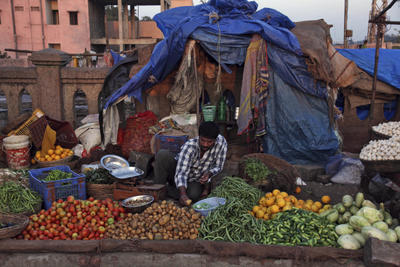So how can India pay for this deficit and develop a longer-term solution?
Leaving aside a major and sustained increase in exports, there are two options: India can either reduce its reserves or attract foreign capital inflow. While adjusting reserves is a choice for India to make on its own, inflows from abroad do not always reflect what the recipient economy desires or needs. Foreign capital inflow, be it FDI or portfolio-related flows, is guided partly by the state of the recipient economy, but mostly by global factors — and US monetary policy in particular. The result for India is that if the economy experiences a downturn coinciding with a phase likely to deliver more capital inflows, its exchange rate does not need to depreciate, and policy makers and the media all seem to rejoice in the relatively high value of the rupee. Is there a more natural mechanism that would allow India to attract an inflow of dollars and offset its current account deficit?
India can certainly borrow, but foreign capital inflows are far better for the economy, because they are largely non-debt flows, and are therefore less risky, albeit quite volatile. If the current account deficit leads to a depreciation of the exchange rate, rupee-denominated funds will become cheaper. And if the scenario seems likely to improve in the near future, the rupee will appreciate and that by itself will raise future returns, attracting more capital inflows. But such a mechanism has to be initiated through a depreciation of the rupee — which India simply never wants to allow. This is a billion-dollar mistake. The inherent desire to stick to a high rupee value is a fatal error of judgment because if India cannot hold onto that level, the rupee is bound to crash. This is very likely to happen, possibly by the middle or later half of 2014, when US quantitative easing begins to ease off.
India therefore faces a problem where market signals are unnecessarily jammed. The price of anything contains information about the state of the market; thus the rupee’s value should reflect India’s inability to contain its current account and trade deficits. If the rupee is allowed to depreciate, it gives a signal that policy makers need to do something about excessive imports or inadequate exports. Such a signal should generate concern in the public domain and in society at large about India’s position in the global economy. But when depreciation is needed, sudden inflows of capital halt the process, and the inherent weakness of the economy is hidden under a veil of artificial optimism. If the rupee becomes more expensive, people spend more on foreign goods and services — and with the real effective exchange rate moving in favour of the rupee due to high domestic inflation, the true picture is again obscured. The true signal is jammed by sporadic capital inflows, which the government and media continue to celebrate.
The problem is that any tendency toward a decline in the rupee, however legitimate, is often assumed to contain a speculative component and therefore provokes an extra push to up the value of the rupee. In a way the depreciation of the currency may contain speculative components, where traders sell excessive rupees to corner the market. Typically in these circumstances the central bank intervenes to stabilise the market. It is tough for any central bank to predict precisely the aftermath of an unanticipated depreciation; therefore, a risk-averse central bank will move to contain the perceived speculative trend by supporting the local currency. But containing speculative actions may directly counter the adjustment mechanism needed to move trade and the current account in the right direction — a drop in the exchange rate may also signal that India needs to do something about its trade gap. Thus, the signal itself needs to be decomposed to include both an essential element and a speculative element, and then the optimal intervention must be designed around this decomposition, which itself is a hard task to perform.
Fundamental problems with India’s trade account also reflect the intrinsic weakness of its exports. Part of this has to do with history. In the 1970s India’s trade performance and industrial background were not so different from South Korea’s. Now, after little more than four decades, South Korea can be proud of several global brands in manufacturing, while India has practically none. India’s abysmal performance in manufacturing has also had an impact on its exports, and the country seems to be ignoring the lesson from China, which deliberately undervalues its currency to keep up the export momentum. Such a strategy may have some adverse consequences, but India cannot deny that a deliberate overvaluation of its currency is not at all good economics.
Market signals must be allowed to prevail, and prices must reflect the good or bad state of affairs. India cannot afford to be lavish in external spending, and cannot afford to grow at a high rate without worrying about its increasing demand for oil. The country should acknowledge that foreign capital inflows are not the only issue it should talk about — rather, India should be seriously worried about its trade and current account deficits. India is living beyond its means. The sooner it wakes up to this fact, the better.
Sugata Marjit is Reserve Bank of India Professor of Industrial Economics at the Centre for Studies in Social Sciences, Calcutta, and a member of the State Planning Board, West Bengal. The views expressed here are entirely personal and do not implicate the RBI in any way.

